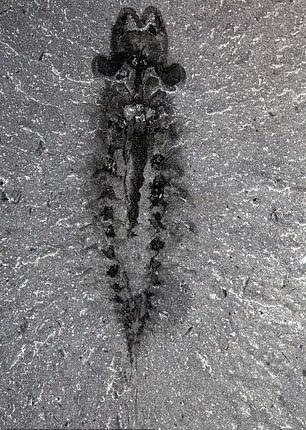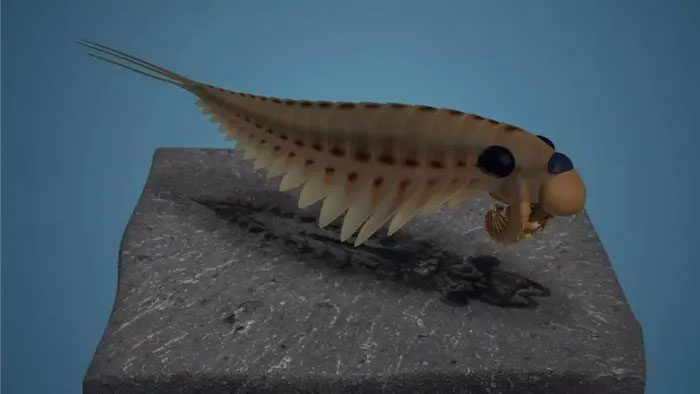Researchers at the Royal Ontario Museum (ROM) in Toronto, Canada, recently announced the discovery of a fossil belonging to a strange marine predator from the Cambrian period known as Stanleycaris hirpex. The newly found fossil of this peculiar creature is remarkably well-preserved, including its brain, nervous system, and a third eye.
This discovery is part of an “incredible” fossil treasure dating back 506 million years.

Fossil specimen of the strange creature. (Photo: Royal Ontario Museum).

Fossil of a predatory creature over half a billion years old with a well-preserved brain.
Paleontologists discovered these ancient treasures in the Burgess Shale, a formation in the Canadian Rockies of British Columbia, renowned for its rich and well-preserved fossilized animal remains. Among the half-billion-year-old fossils are numerous specimens of marine creatures.
Joseph Moysiuk, the lead author of a study on the fossils, stated: “Previously, there have only been a few other fossil brain discoveries, especially from the Cambrian period, but this remains quite rare, and it has only been observed in the last ten years.”
Despite its small size—measuring less than 20 cm—S. hirpex was likely a fearsome predator.
Moysiuk noted: “It was truly aggressive with sharp spiny claws and a round mouth that made it look very fierce. It also had long spines, like rakes, to hunt for any buried creatures, lateral fins to help it glide through the water, and spines shaped like forks pointing towards each other from opposing appendages, which we think it used as jaws to crush its prey.”
The fossils indicate that the brain of S. hirpex is divided into two parts: the forebrain, connected to its eyes, and the deutocerebrum, linked to its front claws. This brain structure differs from the three-lobed structure of modern arthropods, which are distant relatives of S. hirpex, such as insects. In contrast, the brains of these modern relatives connect the brain to the mouthparts or upper lip, among other body parts.
Moysiuk remarked: “The preservation of the brains of these animals gives us a direct insight into the evolution of the nervous system from the fossil record.”
Another intriguing aspect of S. hirpex is its oversized third eye, a feature first observed in radiodonts.
He added: “The discovery of the third eye was quite a surprise for us. For the first time, we can recognize this gigantic median eye alongside the pair of lateral eyes we were already familiar with.”
Moysiuk speculated that this third eye helped the creature navigate and was particularly important for a predator like Stanleycaris that needed to move quickly and accurately in its environment.
Three of the S. hirpex fossils excavated during the dig are currently on permanent display at the Royal Ontario Museum in the Willner Madge Gallery, Dawn of Life.
The discovery was published on July 8 in the journal Current Biology.





















































